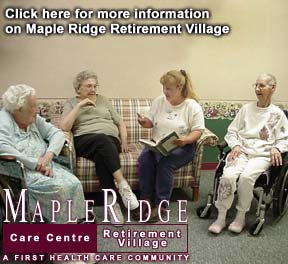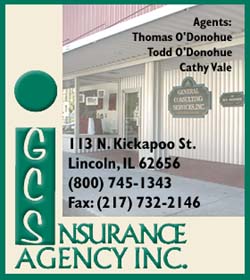|
Anderson
points out that her profession goes back to 1893, with the
founding of the first public health nursing agency, the Henry
Street Settlement in New York City, started in 1893 by Lillian
Wald. Wald wrote two books about her experience: “The House on
Henry Street” and “Windows on Henry Street.”

[Kristine Skelton and son Tyler, age 3, get a
checkup from WIC nurse Jennifer Onken at the Logan County
Health Department.]
Those
first public health nurses provided services to poor people in
their homes, traveling in any way they could to serve those in
need. Throughout
their history the nurses walked, rode horseback, took trains and
streetcars, and even wore snowshoes when there was no other way to
get to rural residents. Later,
when they no longer had to wear floor-length uniforms, they rode
bicycles. The first
cars available to them were donated.

One
surprising thing, Anderson says, was that these pioneer nurses
received little or no salary.
Fund-raisers were held which provided their pay and covered
expenses like buying dressings or warm blankets for patients.
Autographs of famous people, such as Mrs. Warren Harding,
Woodrow Wilson and Herbert Hoover, were sold at auction to
encourage larger donations.
A
cartoon poster in 1920 asked patients to raise funds for the
nurses. A mother and
her newborn are in bed, with a small child at the mother’s side.
The nurse is climbing the steps to the home.
The caption reads:
“Send the Nurse to the Sick at Home.
Contribute to the $50,000 fund for the Instructive Visiting
Nurse Society. Only
10% of the sick go to hospitals.
Help send the nurse to the other 90%.”
In
the early years of the 20th century, nurses had to cope with many
diseases which have been eliminated today, such as smallpox,
scarlet fever, polio, typhoid, whooping cough and diphtheria,
Anderson explains. There
were no antibiotics to bring about quick cures, and the nurses
could only do their best to try to prevent diseases from
spreading.

[In the first decade of the 20th century, nurses
wore floor-length uniforms that had to be starched so heavily they
would stand up by themselves.
Here Alma Hieser of Minier poses after graduating from the
Mennonite School of Nursing in Bloomington.]
They
made frequent visits to critically ill people, often giving them
sponge baths and alcohol rubs to keep fever down.
They changed dressings and checked for infections.
They visited mothers-to-be, newborns and children.
They had standing orders from physicians and reported on
the ill person and on the spread of the illness.
“They were the doctor’s eyes in the home,” Anderson
says.
In
these early years, contaminated food and water caused many
food-borne infections. Anderson
notes that often nurses had to show families how to cook food so
that it was nutritious and safe to eat.
One of their most important tasks was to teach the
importance of cleanliness in preventing the spread of disease.
At
the turn of the century, public health nurses screened the new
immigrants at Ellis Island in New York.
Gold miners in California, who may have developed ulcers
from inadequate shoes, received foot care in 1910.
Nurses tended the sick during the influenza epidemic in
1918-19. School
children in rural settings were weighed and measured in the 1920s
as part of a Children’s Bureau Program.
After the California earthquake in 1925, the nurses visited
displaced residents in their makeshift outdoor homes and tents.
Today,
the public health nurses in the Logan County Health Department
provide services to people of all socioeconomic classes, not
simply the poor. “We
try to be user friendly,” says Debby Cook, director of nursing.
“We are open from 7:30 to 5 p.m., and we are here over
the noon hour for people who work.
We offer almost all of our services on a walk-in basis,
which is not common.

“A
lot of what we do is what public health nurses have always done
– try to prevent illness from occurring.
We emphasize prevention.
We are the first step to ultimately keeping people healthy.
We give the most immunizations in the county, against
childhood diseases, tetanus, flu and
pneumonia, as well as immunizations for foreign travel.”
(To
top of second column)
|

The
Health Department nurses provide many of their services at the
clinic at 109 Third St. Like
their predecessors, they help mothers-to-be with prenatal care and
education. They promote the health of children with a number of
programs, including immunizations, physical examinations, car seat
rental, a clinic for children from infancy to age three and
testing of blood lead levels.
For
lower income families, the WIC program (Women, Infants and
Children) provides supplemental food and other services.
AIDS testing and counseling, chest X-rays, TB skin tests
and Hepatitis B vaccinations are some of the ways the nurses help
to prevent the spread of contagious diseases today.
Family planning services are also available through the
health department.
Nurses
help those with chronic health problems, screening for high blood
pressure, anemia, diabetes and cholesterol.
Through a grant from the Area Agency on Aging, the nurses
can provide free blood screenings for those over 60 on the first
five weekdays of the month through September of this year.
Blood pressure screenings are always provided free of
charge.
A
few years ago, most public health nursing was done in the home,
Cook says. Although
many services are offered at the Health Department, in some ways
the public health nurses have come full circle.
In the new millennium, many of them are on the road again
and some are actually making house calls.

A
nurse practitioner travels on the Rural Health Van to provide care
to people in surrounding communities who would have difficulty
getting to the Health Department.
The Rural Van is the result of a unique five-way
partnership of Abraham Lincoln Memorial Hospital, Family Medical
Center, Logan-Mason Mental Health, the Lincoln Chamber of Commerce
and Public Health Department.
This
group, called Healthy Communities Partnership, received a grant of
$400,000 which bought the van and has funded its operation. The van goes to rural areas – Hartsburg, San Jose, Emden,
Chestnut, Cornland, Mount Pulaski, New Holland, Middletown,
Elkhart, Atlanta, Latham, Beason and Broadwell – and provides
almost all of the services which are offered by the Health
Department.

Nurses
also visit new mothers and babies free of charge through a
“Special Delivery” program.
They may encourage breast-feeding, explain the immunization
program, weigh and measure the baby and spot any potential
problems early. This
program is especially helpful to first-time mothers, Cook says.
“Many people don’t have extended families any longer.
They don’t have a mother or grandmother to call, and they
may feel embarrassed to go to the doctor’s office with their
concerns.”
Nurses
in the WIC program may make Family Case Management house calls,
providing support to lower-income families when the doctor thinks
such a visit is needed. The
nurse may help the family find information or referrals for
housing, groceries, utilities, domestic problems or other needs.
The
Home Health Agency, a Medicare-funded program, provides care and
therapy for homebound persons, frequently seniors.
Nurses help by changing dressings, giving medical tests, IV
therapy, catheter changes and making sure the patient receives
whatever other therapy is appropriate.
These services are available to non-Medicare patients for a
nominal fee.
Nurses
are also on the road providing health education at schools, health
fairs, day care centers, women’s groups, church groups –
wherever there is a need, Cook says.
“We will provide health education about all sorts of
topics: AIDS, cancer prevention, smokeless tobacco, even getting
rid of head lice.”
The
Health Department staff includes seven full-time public health
nurses, three full-time
WIC nurses, a nurse at Lincoln Community High School when it is in
session, four home health nurses, one education coordinator and the
director of nursing. All
are registered nurses and many have a bachelor of science degree
in nursing. Like
their predecessors, they work closely with area doctors.
Navy
blue has always been the official color of the public health
nurse. The first
public health nurses wore floor-length uniforms.
In cold weather, navy blue wool capes were standard.
In the 1920s, the uniforms rose to mid-calf length, and by
mid-century the skirts were just below the knee.
Today the dress code is much less formal, but navy is still
the official color. Most
of the Health Department nurses today wear navy pants, print
jackets, and shirts that can be white, navy or light blue.
“Many
changes have occurred within public health throughout the
years,” Mary Anderson says.
“Our goals, however remain a constant:
to preserve, protect, and enhance the health of the
public.”
[Joan
Crabb]
|
|
 While
most like to bask (or bake) in the sun to get that “golden
glow,” overexposure to the sun can be a precursor to potential
health problems, according to Debby Cook, director of nursing for
the Logan County Health Department.
If you want to get a nice tan for the summertime, use
sunscreen. The higher the SPF, the more protection provided. This
will help prevent burning, peeling, blistering and premature aging
that can be caused by too much time in the sun. “Taken to the
extreme, (tanning) can be very dangerous,” she says. While
most like to bask (or bake) in the sun to get that “golden
glow,” overexposure to the sun can be a precursor to potential
health problems, according to Debby Cook, director of nursing for
the Logan County Health Department.
If you want to get a nice tan for the summertime, use
sunscreen. The higher the SPF, the more protection provided. This
will help prevent burning, peeling, blistering and premature aging
that can be caused by too much time in the sun. “Taken to the
extreme, (tanning) can be very dangerous,” she says.
Cook
explains that sunscreen should be applied frequently—every two
to three hours— to all exposed body parts. That includes the
face, neck and ears—areas that are often overlooked.
Also don’t forget to protect young children, infants and
seniors who have delicate and vulnerable skin.

Not
only can overexposure to the sun cause a bad burn, it can
potentially lead to more serious health concerns such as heat
exhaustion and heat stroke. Heat exhaustion, says Cook, is the
most common health issue during the summer months.
She explains that it is caused by a loss of fluids,
electrolytes and salt from the system. Symptoms include dizziness,
cool and clammy skin and an upset stomach. When conditions seem
favorable for heat exhaustion, it is vital to drink plenty of
fluids, such as water and fruit juices, and avoid drinks that
contain caffeine or alcohol.
(To
top of second column in this article)
|

Preventing
many summer health problems is mostly “common sense,” says Cook.
When watching children, she adds that parents should keep a
close eye on children and provide rest breaks in a cool area.
“Parents need to be aware,” she adds, suggesting that quiet
activities be intermingled with strenuous activities.
Prevention
is the key, says Cook. “We (the Health Department) are here to
provide education and to prevent these type of things from
occurring,” she explains. “(People) need to be aware of
potential hazards."
For
more information about how to protect yourself this summer, contact
the Logan County Health Department at 735-2317. Or stop in and pick
up some valuable summer safety information.
|



